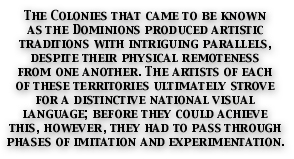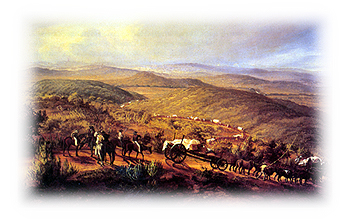|
Of all Dominion art, that of the Europeans in South Africa was the most conservative. The reason for this was that, for much of the Nineteenth Century, artists from the Afrikaner community continued to draw upon the traditions of Dutch painting. Indeed Cape paintings in the sumptuous Amsterdam style continued to find favour well into the Twentieth Century. French impressionism only became influential in the 1920s and modernists movements in the 1940s - in each case several decades after their arrival in Canada, Australia, and New Zealand.
Moreover, art in South Africa seemed to be little influenced by economic change and urbanization for the first half of the Twentieth Century. As elsewhere, the prime focus of South African art was to render the essence of its landscape and meteorology, its botany and zoology, in terms of its own values of light and colour, and to portray its indigenous peoples in supposedly traditional settings. The Zulu people, who were seen as representing the essence of a black military tradition, fearsome yet dignified, were depicted in the same romantic convention as had been applied to studies of Maoris. Other Africans were either ignored or were shown as long-suffering servants and agricultural employees. It was not until after the Second World War that a more realistic and fully urban art began to emerge. This came about partly because artists became much more aware of the black presence in the white economy.
|


